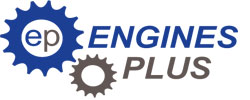
At Engines Plus, we understand the significance of engine maintenance in ensuring the very best performance across various applications. Whether it’s powering boats or construction equipment, our dedicated team of experts is committed to delivering top-notch products and service. In this blog, we’ll explore the key areas to check for oil leaks in your engine and gearbox, empowering you to maintain peak efficiency and extend the lifespan of your equipment.
Oil leaks can be a nuisance for any engine, causing reduced performance, potential damage, and costly repairs if left unattended. Regular visual inspections are a simple yet vital maintenance task that can help detect issues early and prevent further damage. Follow our guide below, put together by the Engines Plus experts on the key areas of your engine to check:
Around the Oil Filter: The oil filter is a common culprit for leaks due to improper installation or a worn-out seal. Inspect the area surrounding the oil filter for any signs of oil residue or dripping.
Base of the Dipstick: The dipstick offers a convenient way to monitor oil levels but can also be a source of leaks if the O-ring seal is damaged. Check the base of the dipstick for any oil accumulation or signs of seepage.
Joints of the Sump Pump and Sump Pipe: The sump pump and its connections are crucial for oil circulation. Check these joints for any signs of oil leaks, particularly where the pump connects to the sump.
Sump Gasket: The sump gasket forms a seal between the engine block and oil pan, preventing oil from leaking out. Inspect the sump perimeter for any signs of oil seepage or a compromised gasket.
Around the Head Area: The cylinder head houses various components prone to oil leaks if not maintained. Check around the head area for visible signs of leaks, such as wetness or dripping.
Gearbox: Inspect the gearbox for oil leaks, as lubrication loss can lead to gear wear and transmission issues. Visually inspect the gearbox casing for signs of oil seepage or dripping.
Gear Selector Seal: The gear selector seal prevents gearbox oil leakage around the selector shaft. Inspect this area for signs of oil leaks or wetness.
Gasket: Gaskets throughout the engine and gearbox can degrade over time, leading to leaks. Inspect gasketed joints for oil seepage or compromised seals.
When conducting these checks, remember to remove engine keys and turn off battery isolator keys before starting work.
Regular visual checks for oil leaks are essential for maintaining engine and gearbox health. Detecting and addressing leaks early can prevent further damage and expensive repairs. Incorporate these inspection points into your maintenance routine to keep your equipment in top condition and ready for action. Remember, a proactive approach to oil leak detection can save time, money, and hassle in the long run.
For further information and expert advice, get in contact with the Engines Plus team today.
